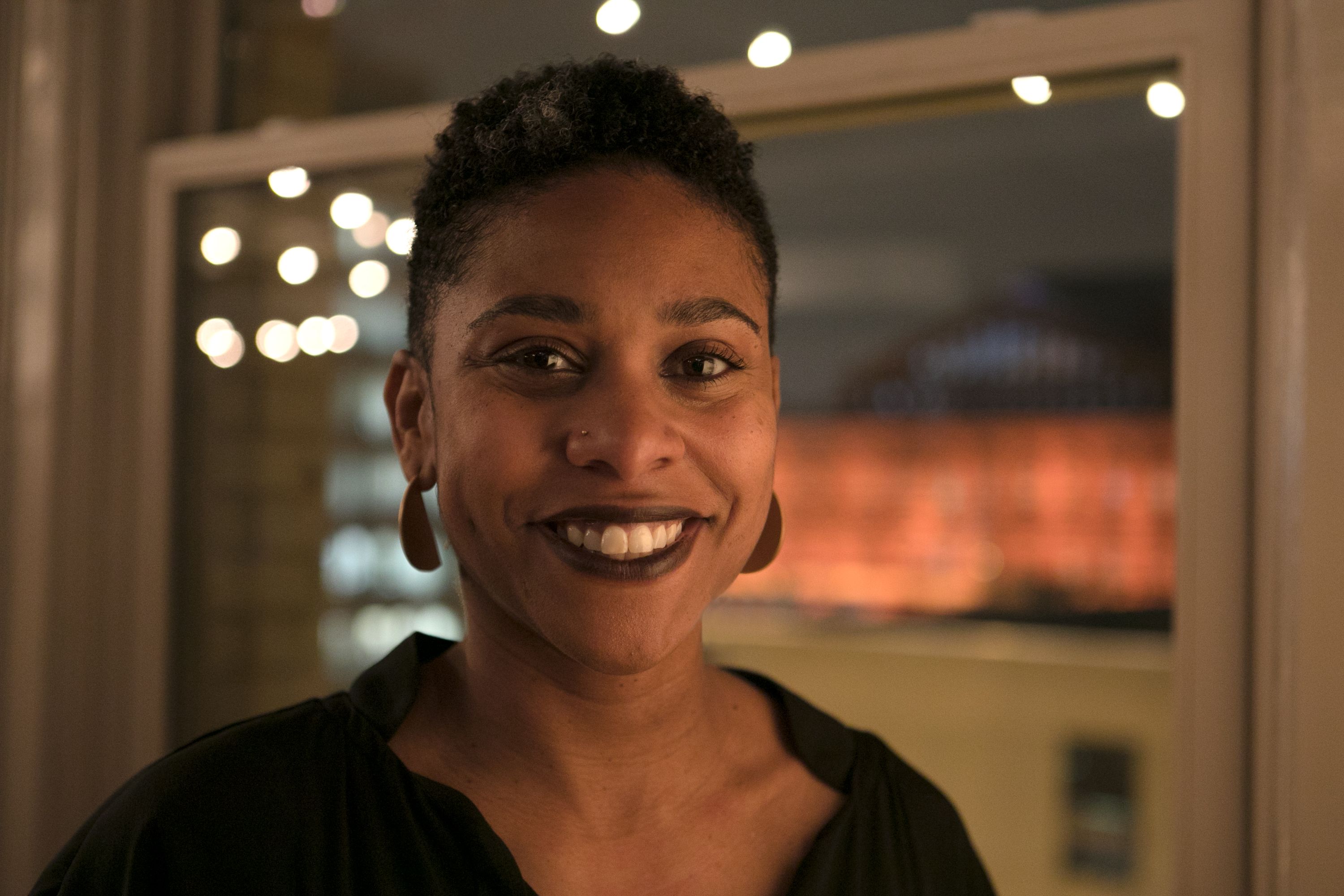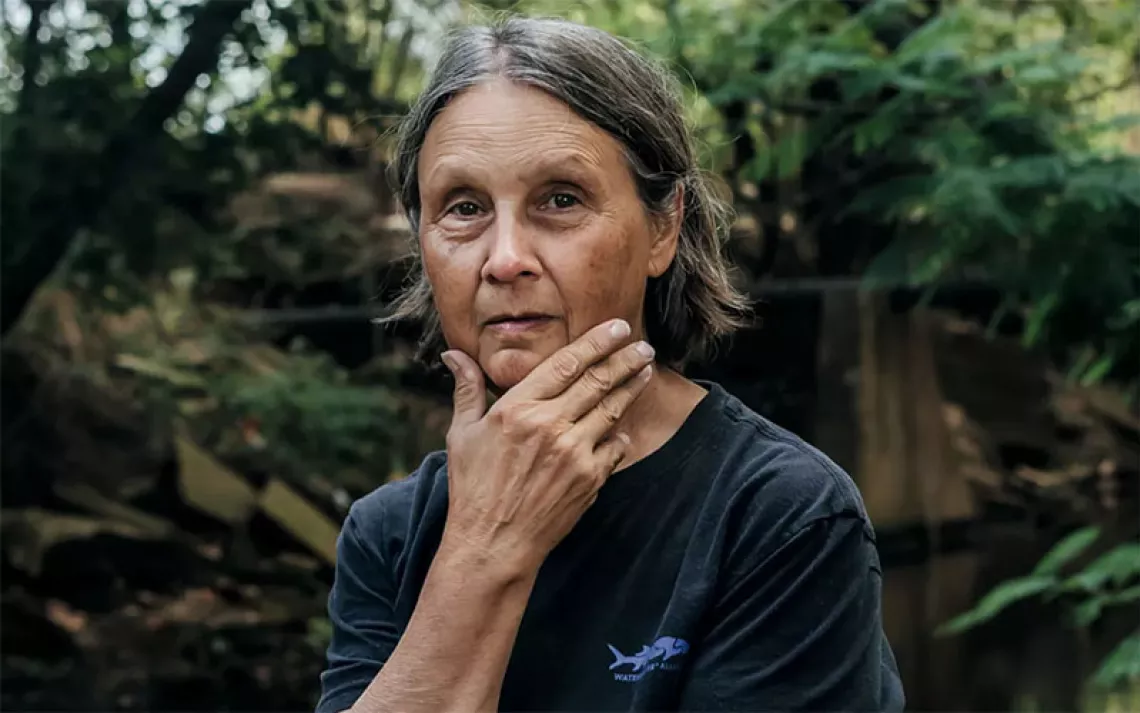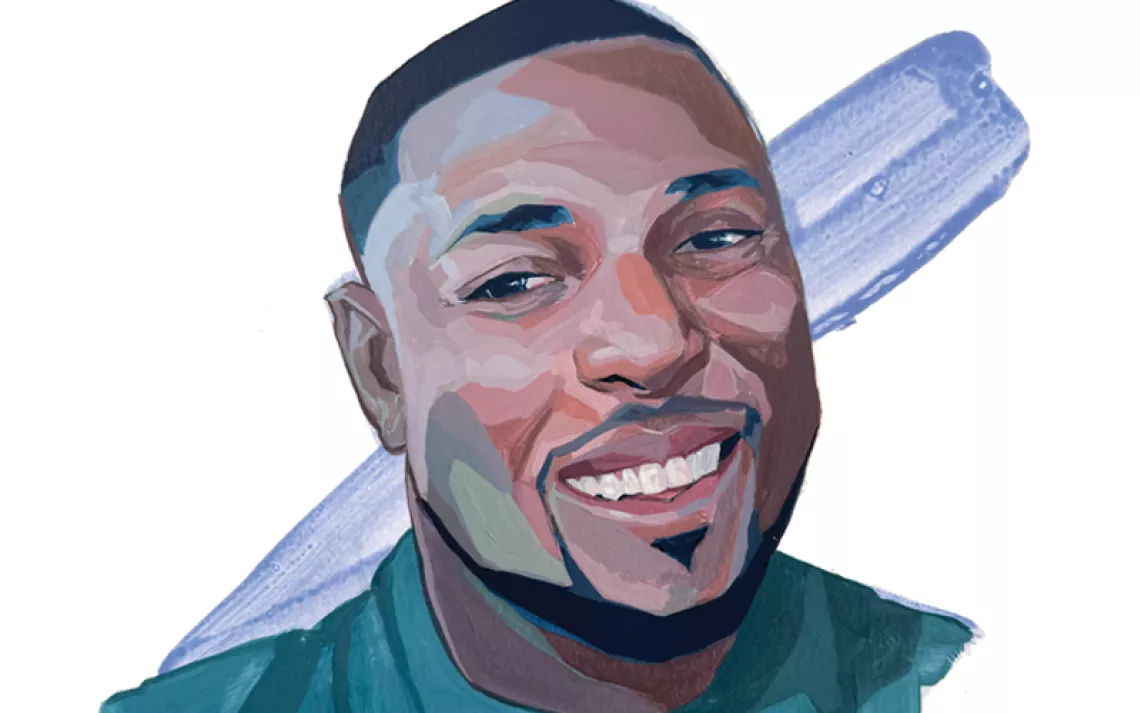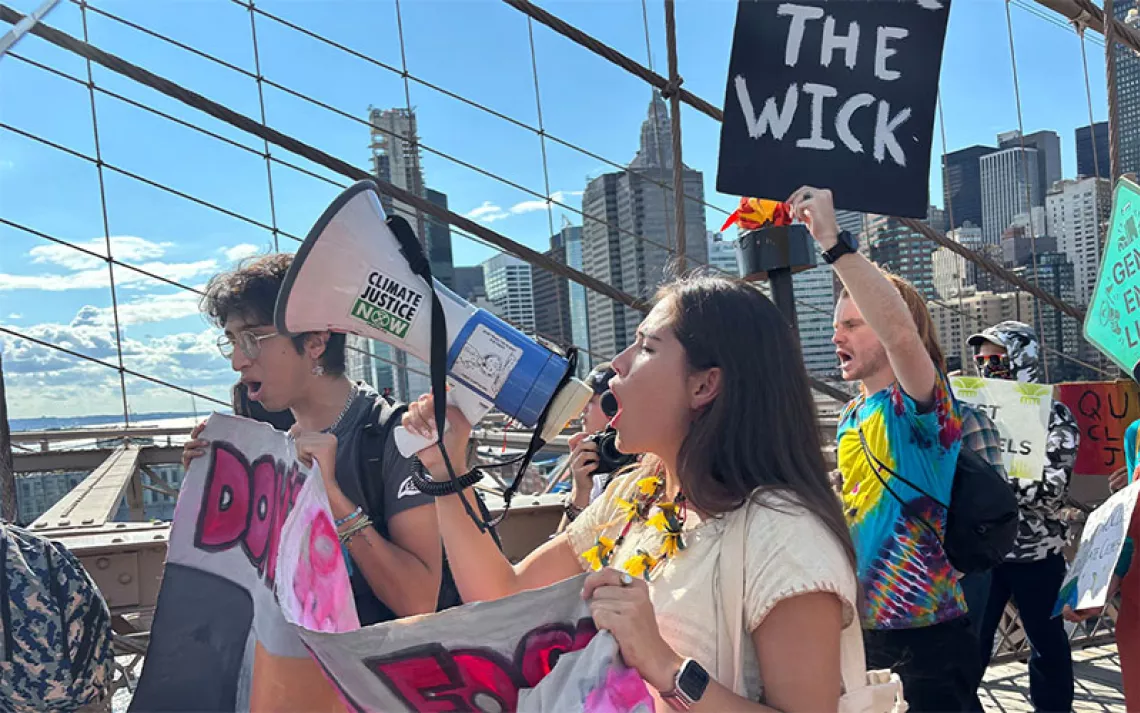So You Marched. Now What?
The night before the Women’s March on Washington, organizers were already reflecting on what comes next

Kierra Johnson, Linda Sarsour, and Cristina Jiménez at the (Un) Happy Hour the night before the Women's March on Washington | Photo by Wendy Becktold
On the evening of Donald Trump’s inauguration, three organizations—United for Reproductive and Gender Equality (URGE), United We Dream, and the NAACP Youth and College Division—cohosted what they called an (Un) Happy Hour at the Loft on F and 6th Streets in Washington, D.C. Despite the name, the event was festive, with music, food, and drinks. It was the night before the Women’s March; more than 150 partners and sponsors had signed on, and practically every progressive cause in the country would be represented: immigrant rights, racial justice, gender equity, LGBTQ rights, indigenous rights, environmental justice. Bringing together such a diverse coalition under the banner of women’s rights had not been without hiccups, but it had galvanized the progressive movement in a way possibly not seen since the 1960s. Along with the march in D.C., 600 sister marches were scheduled to take place around the country and the rest of the world (as we gathered at the Loft, the first was already underway in New Zealand). Organizers were anticipating possibly the biggest mass demonstration in U.S. history.
Attendees at the Loft, mostly in their 20s or early 30s, milled around, snacking on the buffet, sipping wine or beer, and dancing. It was raining outside, and through the windows, I could see men in tuxedos and women in gowns and ankle-length fur coats hurrying to and from inaugural balls, passing police cars and military Humvees in streets otherwise empty of traffic.
Around 8 P.M., the crowd gathered for a panel discussion led by Kierra Johnson, the executive director of URGE, with three prominent organizers in the modern civil rights movement: Cristina Jiménez, executive director and cofounder of United We Dream; Symone D. Sanders, former press secretary for Bernie Sanders; and Linda Sarsour, executive director of the Arab American Association of New York and a cochair of the Women’s March.
Sitting next to each other on stools, the four women seemed to be enjoying the chance to be together. Jiménez talked about listening to Sarsour in Brooklyn when she was a young, undocumented teenager terrified of being deported, and being inspired to become an activist. She went on to help lead the campaign for the Deferred Action for Childhood Arrivals (DACA) program, which was enacted in 2012. The program, which protects over 1 million young immigrants from deportation, is now in jeopardy under the Trump administration.
Sarsour talked about the first Muslim online organizing platform, MPower Change, which she helped found in 2015. “We could have called it Muslim Power,” she said, “but we didn’t want to scare everybody.” The audience laughed, and Johnson wagged her finger and said, “That would be going too far!”
The march had yet to take place, but the speakers were already preoccupied with what would happen afterward. Many of the participants were new to activism. When it was over, would they go on with their regular lives? Or, would their participation mark the beginning of a sustained commitment to advancing progressive issues?
“The march is the start, not the end,” Sanders said. “We need people to commit to do the work next week, and the week after that, and the week after that.”
The women offered up some basic advice that they hoped people would take with them once the march was over. Here’s a summary of what they said:
Get to Know Your Neighbors
Sarsour: “I was in a lecture with 500 people the other day, and I asked, ‘Do you know everybody who lives in your apartment complex or on your street?’ About 20 percent of people in the room raised their hand. I always tell people, ‘How am I supposed to protect an undocumented woman in my building if she don’t know my phone number?’ If there’s a registry program and the Muslims in the neighborhood don’t know who their friends are, how are they supposed to ask for help? I’m asking you to do the basics. Knock on your neighbor’s door. Just say, ‘Hey, by the way, I live in the apartment down the hall from you. If you need anything, here’s my number.’ Sometimes the neighbor is going to say, ‘Can I leave my cat here for an hour?’ You don’t know what they’ll need. But this basic level of human interaction is what we are missing in this country.”
Have the Difficult Conversations
Jiménez: “People ask me what I say to my family members who voted for Trump. I’m like, ‘Uh, I have one member of my family who can vote.’ I tell them, ‘We cannot be talking to each other in our bubble. If we’re talking to people in our bubble, it means we aren’t growing, and if we ain’t growing, we ain’t winning.’ If we don’t have the courage to have these conversations, we’re not going to bring more people into our movements. We have to have the courage and the humanity to talk to people who don’t agree with us. We have to bring more people in.”
Find Your Lane
Sanders: “During the civil rights movement, there was a photographer who documented his time with Dr. King. He wrote a book, and in one of the first chapters, he talked about the first time he saw a black man being beaten by a police officer (the photographer was white). Afterward, they all go back to the church, and Dr. King is very angry. He says, ‘Why did you put your camera down? If you go to jail, who will document what happens so that everyone can see?’ It’s not the photographer’s role to get beaten and arrested. It’s the photographer’s role to take a picture. We need to think about what are our personal talents that we can bring to this work. We need photographers, we need writers—some of us need to be protesting in the streets and getting arrested. But we need lawyers to help the people who get arrested. Figure out what your lane is. I guarantee that your talent is needed in the work. Some people watch the kids while other adults do the organizing. I just want folks to know that there is no work that is too small, too petty. Please take some self-inventory and go out into your communities.”

Kierra Johnson, executive director of URGE | Photo by Sam Murphy As the discussion concluded, Johnson asked audience members to close their eyes. “I want you to ask yourselves, what have you done in the last six months for racial justice. Not what you said, not what you clicked ‘like’ on, what did you DO for racial justice? What did you DO to advance gender equity in your community? I want you to think about how poverty shows up at your doorstep, in front of your school, near your home, in your community. What have you done in the last six months to advance economic justice? What did you do to change a lived reality?”
The room fell silent. Then she said, “Whatever you did or didn’t do before today, it doesn’t matter. The political and cultural times require you to do more. They require that you reach beyond what you ever thought was possible. They require you to be in the community because we can’t do it alone. They require you to understand movements that you never thought about working with before.”
With that, the discussion was over. The party resumed, and I headed out into the chilly night, past the ball-goers and police cars, to the Washington Metro.
WHAT YOU CAN DO
Sign up for WMW 10 Actions 100 Days: The first action is to print a Women’s March postcard and write a message to your member of Congress. Visit the First 100 Days page to find out more.
 The Magazine of The Sierra Club
The Magazine of The Sierra Club



